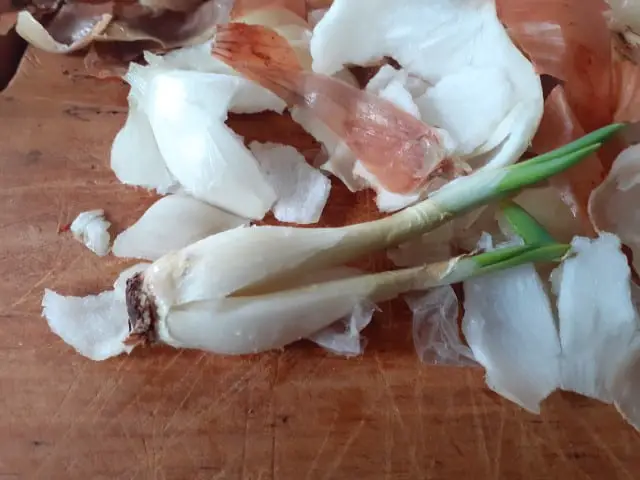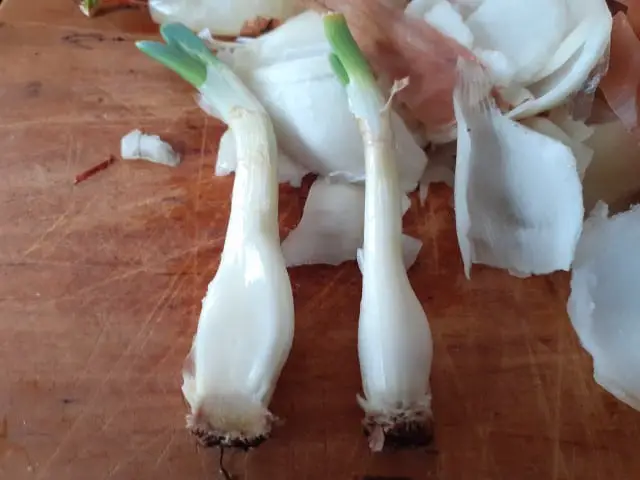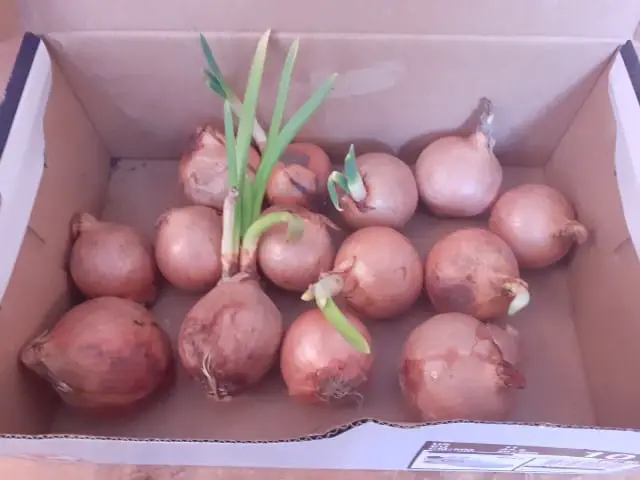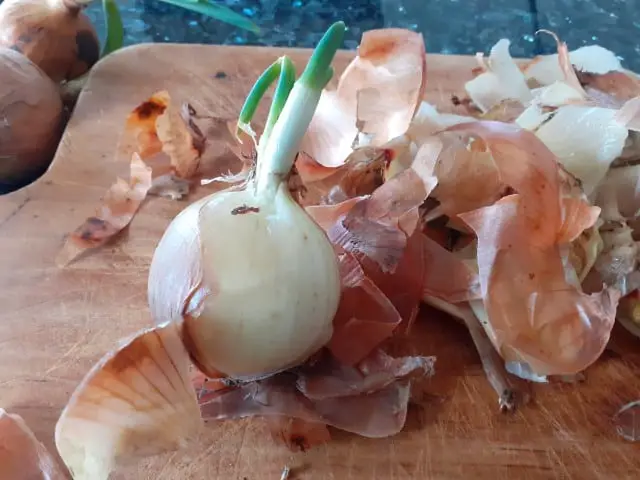Onions sprouting at the back of the vegetable rack are a common sight for the average householder. Indeed it is something that most folks have experience in their lives – even if it is just remembering their parents throwing them in the bin!
The fact is that once the temperature reaches over 68F (20C) then the onion will start sprouting. For this reason onions should be stored in a cool dry space at between 32-40 F if you want then to keep for any length of time.
However given that most of us keep onions in a vegetable rack in the kitchen (a bad move really) where the temperature is well above the ideal for long storage, sprouting onions become a fact of life if we do not eat them fast enough!
So the good news is YES you can plant shot onions! instead of throwing them away. Here is how you can re-use this valuable food source simply and without great fuss.
How to plant onions that have sprouted
To regrow or plant a shot onion bulb, you simply peel away all the outer coats until you have exposed the bulbs formed under the skins. This is usually 2 or 3 bulbs. Separate them carefully at the roots, leaving some roots on each bulb. Place in a jar of water until more roots form, then plant as normal in the garden or pots.

That’s all there is to it, and over the next few weeks the bulbs will form into healthy eatable onions once more.
Why you should be re-growing sprouted onions

Ok so well all know that onions are fairly cheap to buy in the store, so are they really worth the effort of regrowing? Shouldn’t we just throw them away? Here’s a few good reasons why it is indeed worth the effort.
- Why Not? If like me you are averse to throwing out potential food and abhor waste, then this is an excellent way to avoid needless waste and feed the family at the same time.
- Family Time: This is a great little project to involve the kids in. Imagine sitting around the table with the kids and showing them a practical skill that they can do for themselves. This is true teaching at its best – and you do not have to have a university degree to do it! The project continues when adding the resulting onion sets to water and watching the roots form over a number of days – then planting the onions – invaluable life experience!
- Its Practical: Ok so maybe onions are cheap to buy, but what if you do not live near a store where you can just buy them. As any off-gridder will tell you – It is much more practical just to grow your own and have food ‘on tap’ whenever you need it.
When to plant onions that have sprouted
Onions are a cold weather vegetable so they are usually planted in the early Spring or when the ground temp is around 70F (21C). They can stand a gentle frost so do not worry about that.
Onions also prefer free-draining, fertile soil conditions in a sunny spot where they should be planted in rows 6 inches apart with the rows being about 12 inches apart.
This distancing is mainly to allow for weeding between the rows over the growing period – if you are using traditional growing methods.
If however you are using Raised Beds or following the Square Foot Garden methods, then this distancing is pretty much done away with, allowing many more onions to be grown in the limited space that these methods provide. Clicking on these hyperlinks will take you to more articles about these exciting methods for growing veggies in limited spaces.
Does it matter what kind of onions?
Any onions including garlic or shallots can be re-grown in this way, as they all have a tendency to sprout if the conditions are right for them. The main thing is to let them sprout until you have clear shoots that you can separate into individual bulbs to plant.
Will sprouted onions grow into ‘full grown’ onions?
Not exactly! The re-grown onions tend to be more oval shaped – a bit like shallots but a little larger if they have grow as expected.
They are an excellent addition to stews and casserole dishes.
When to harvest the onions:
Planting sprouted onions is almost the same as planting onion sets except that they have a ‘head start’ as they are already in the growing stage.
In general terms, onions take around 90 days to reach maturity. Re-grown onions should take a little less time than that – just keep a watchful eye on them near the time for normal harvest.
Storing re-grown onions is exactly the same as for any onions you are storing – If you are fortunate enough to have a root cellar then the ideal temperature would be around 32-40F with the ambient humidity at 65-70%



